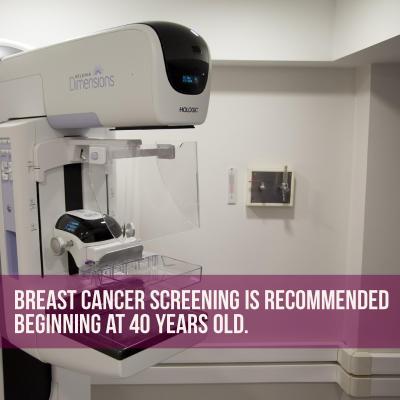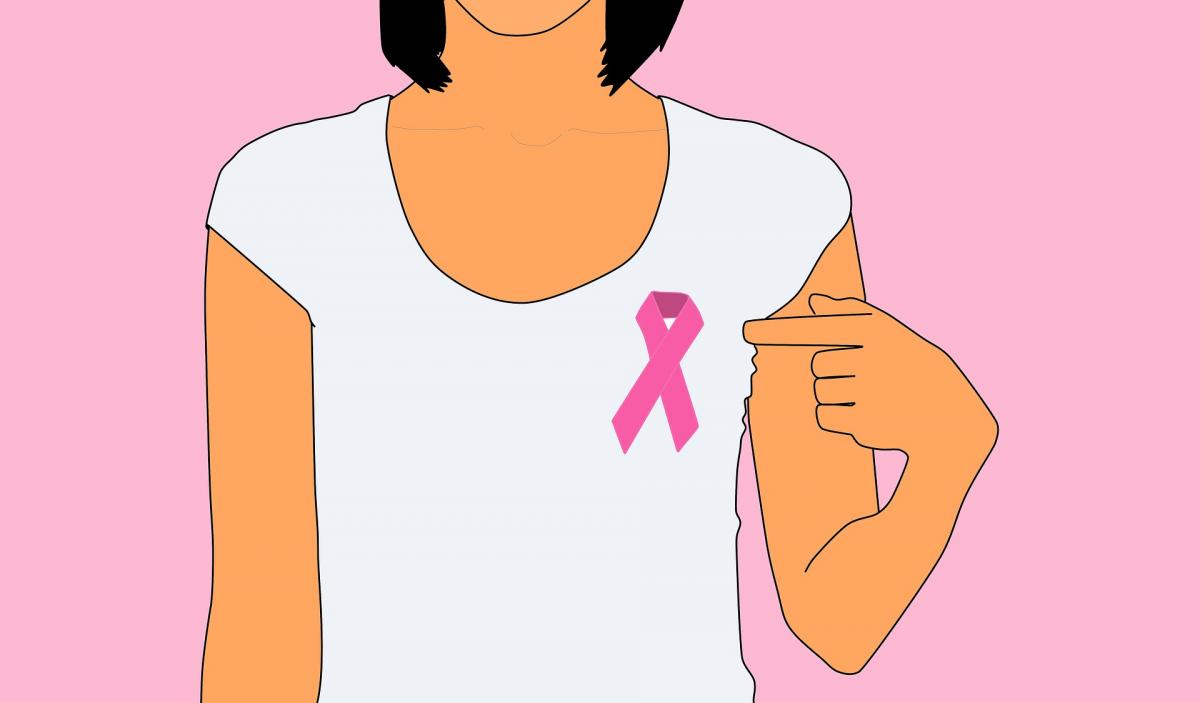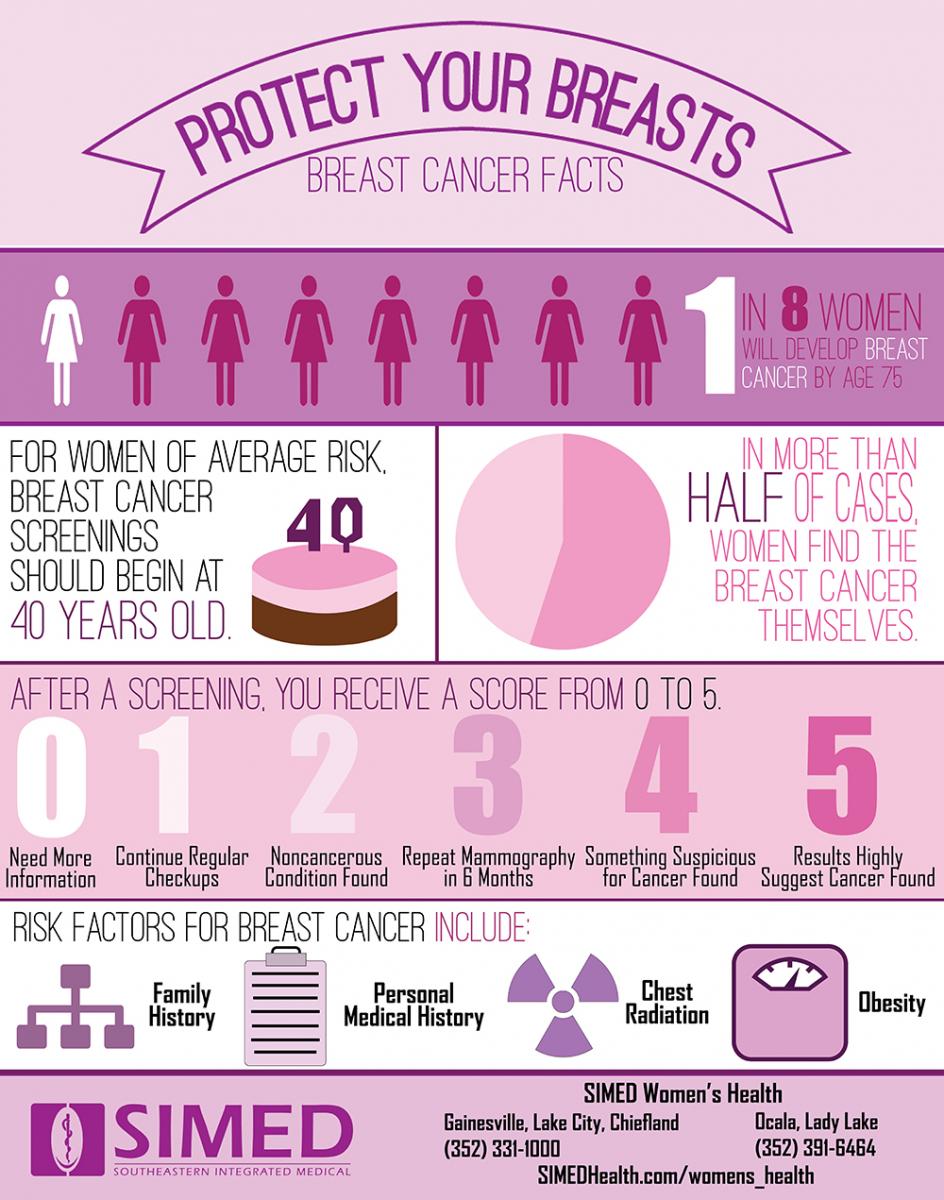
For Breast Cancer Awareness Month, SIMED gynecologist Dr. Prethi Vaddadi compiled the best information from the American Congress of Obstetricians and Gynecologists (ACOG) on breast cancer screenings, mammographies and breast cancer to equip our patients with everything they need to protect their breasts.
Why Breast Cancer Screenings Are Important
In the United States, 1 in 8 women will develop breast cancer by age 75. Regular breast cancer screenings can help find cancer at an early and more curable stage. Screenings can also find breast problems that are not cancer, according to the ACOG.
Screening for breast cancer is done using a mammography. A mammography uses X-ray technology to view the breasts. The images are called a mammogram.
A mammography is done:
1. As a screening test to check for breast cancer in women who do not have signs or symptoms of the disease
2. As a diagnostic test to check lumps or other symptoms that you have found yourself or that have been found by an OBGYN or other healthcare provider.
When You Should Start Having Mammography Screenings
If you have average risk of breast cancer, screening mammography is recommended beginning at 40 years old. If you have not started screening in your 40s, you should start having a screening done no later than 50 years old. Screenings should continue until you are at least 75, the ACOG said.
How to Prepare for a Mammography
The day of your test, make sure not to wear powders, lotions, or deodorants as they can show up on the X-ray and make your mammogram more difficult to interpret. For your mammogram, you will need to undress from the waist up and put on a gown, according to the ACOG.
If you still have periods, you may want to wait until a week after one of your periods to have the test done as breasts are often less tender after a period.
What to Expect
You will be asked to stand in front of an X-Ray machine, and your breasts will be placed between two flat plastic plates. You will feel pressure as the plates will flatten your breasts as much as possible so the most tissue can be viewed. Sometimes mammograms can cause the breasts to ache, but only briefly, the ACOG said.
What Your Screening Score Means
After your mammogram, your results will be given as a score ranging from 0 to 5.
0 – More information is needed. You may need another mammogram
1 – Nothing abnormal is seen. Keep having routine screenings.
2 – Benign conditions, such as cysts (a noncancerous sac-like structure), are seen. Continue having normal screenings.
3 – Something is seen that is probably not cancer. A repeat mammogram should be done within 6 months.
4 - Something is seen that is suspicious for cancer. You may need a biopsy (a sample of tissue taken from the body to be examined).
5 – Something is seen that is highly suggestive of cancer. You will need a biopsy.
If the biopsy indicates breast cancer, the patient will be referred to a surgeon and oncologist for further evalauation and management, according to the ACOG.
What Breast Density on Your Report Means
Breast density means the breasts have more fibrous tissue and less fat which is normal, but may make it harder for a radiologist to see cancer. If your report says you have dense breasts, you may need to discuss other screening tests in addition to the mammography with your gynecologist or health care professional, the ACOG said.
What the Risk Factors for Breast Cancer Are
Risk factors include family history of breast cancer, ovarian cancer, or other inherited types of cancer, chest radiation at a young age, a history of high-risk breast biopsy results, and obesity. Women without these factors have average risk.
What a Breast Exam Entails
In a clinical breast exam done by your ob-gyn or other health care professional, your doctor will examine your breasts. The exafdm may be done while you are lying down or sitting up. Your breasts will be checked for any changes in size or shape, puckers, dimples, or redness of the skin. Your doctor may feel for changes in each breast and under each arm. A breast exam should be done at least annually and more often if an abnormality is found, according to the ACOG.
Why Self-Breast Exams Are Important
Breast cancer is most often found by the woman herself. In almost half of all cases of breast cancer in women 50 and older, breast cancer is found by the woman herself. In woman younger than 50, more than 70% of cases of breast cancer are found by the woman herself.
How to Perform a Self-Breast Exam
Average risk women should become familiar with and aware of the normal appearance and feel of their breasts. If they recognize a change, they should contact their gynecologist or other health care provider, according to the ACOG.
For women of greater than average risk, a breast self-examination involves examining the breasts in a systematic way. For instruction, consult with your gynecologist.
What a Benign Breast Condition Is
A benign breast condition is one that is not cancerous. These conditions usually go away on their own and are easily treated. Because a few benign conditions can increase your risk of breast cancer, you should get follow-up tests with your gynecologist, the ACOG said.
Different Types of Benign Breast Conditions Include
Benign breast problems include pain, lumps or masses, infections, nipple discharge, and skin changes.
What Causes Benign Breast Pain
There are two types of breast pain:
1. Cyclic breast pain – It occurs in response to changes in hormone levels. Your breasts may feel swollen, more sensitive, or painful before your menstrual period. Similar symptoms may also be presented if you use combined hormonal contraceptives.
2. Noncyclic breast pain – It is not related to your menstrual cycle and usually occurs in one breast in one specific location. Many things can cause the pain including infection, i njury, and medication. In rare cases, the pain can be caused by breast cancer.
What the Different Types of Benign Breast Lumps or Masses Are
In general there are three main types of benign breast masses, according to the ACOG.
1. Nonproliferative – This type of mass has normal cells. An example is a cyst. Cysts are usually small and go away by themselves or can be drained with a needle. Another example is a simple fibroadenoma which usually shrinks or goes away on its own. If it is larger or keeps growing, it may need to be surgically removed.
2. Proliferative without atypia – In this breast mass type, the cells are increasing in number but otherwise remain normal. Having this type of lump slightly increases risk of breast cancer in the long term. They are usually surgically removed, but sometimes can just be watched to ensure they are not growing.
3. Atypical hyperplasia – The cells increase in number, but also do not look normal under a microscope. This type greatly increases the risk of developing future breast cancer. Surgery is recommended, along with close follow-ups.
 What Nipple Discharge to Watch Out For
What Nipple Discharge to Watch Out For
Benign discharge usually occurs in both breasts and only when the breast or nipple is squeezed. It is usually milky white or greenish in color. Bloody or clear discharge is more concerning and is a common benign breast symptom. During pregnancy, discharge is normal as breasts prepare to produce milk, but in women who are not pregnant, it can be caused by hormonal changes and some medications. It should be checked by your gynecologist or other health care professional, the ACOG said.
What Skin Changes Can Affect the Breast
Psoriasis and eczema can affect the breast. Yeast infection of the skin folds under the breast is also common, especially among women with larger breasts. Some skin conditions can increase concern of breast cancer. These include dimpling of the skin, redness, warmth, and ulcers (small, red, painful blisters). Nipple changes like crusting, scaling, or changing shape can also raise concern. If you notice any of these symptoms, talk with your gynecologist.
How Benign Breast Conditions Are Evaluated
If you show symptoms, let your gynecologist or other health professional know. You will most likely have a breast exam, but might also have an imaging test like a mammography, ultrasound exam, or MRI, according to the ACOG.
Follow-Up Needed for a Benign Breast Condition
Most conditions don’t increase risk of cancer, but some, like breast lumps, do. If you have a condition that increases risk of cancer, more frequent clinical breast exams and imaging tests over the next 1 -2 years may be recommended based on your age, health risks, and test results, the ACOG said.
Dr. Vaddadi practices in SIMED’s Gainesville and Lake City offices. To review any of these topics, to get tested or examined for breast cancer, or just for general woman’s health issues, schedule an appointment with Dr. Vaddadi by calling 352-331-1000 or requesting an appointment online.
If you show symptoms, need a breast cancer exam, or have not had your annual gynecology visit, you can schedule an appointment with SIMED Women’s Health in Gainesville, Ocala, Lady Lake, Lake City, or Chiefland.
Gainesville: 352-331-1000
Ocala: 352-391-6464
Lake City: 352-331-1000
Chiefland: 352-331-1000
Lady Lake: 352-391-6464
You can also schedule your appointment online. Don’t wait; call or click today.
Don’t forget to follow us on Twitter and Facebook for more content!
View our article on why women in their 20s visit the gynecologist.
View our article on why women in their 30s visit the gynecologist.
